Navigating Disinfection Control in Food and Beverage Manufacturing
By Saskia Neubacher
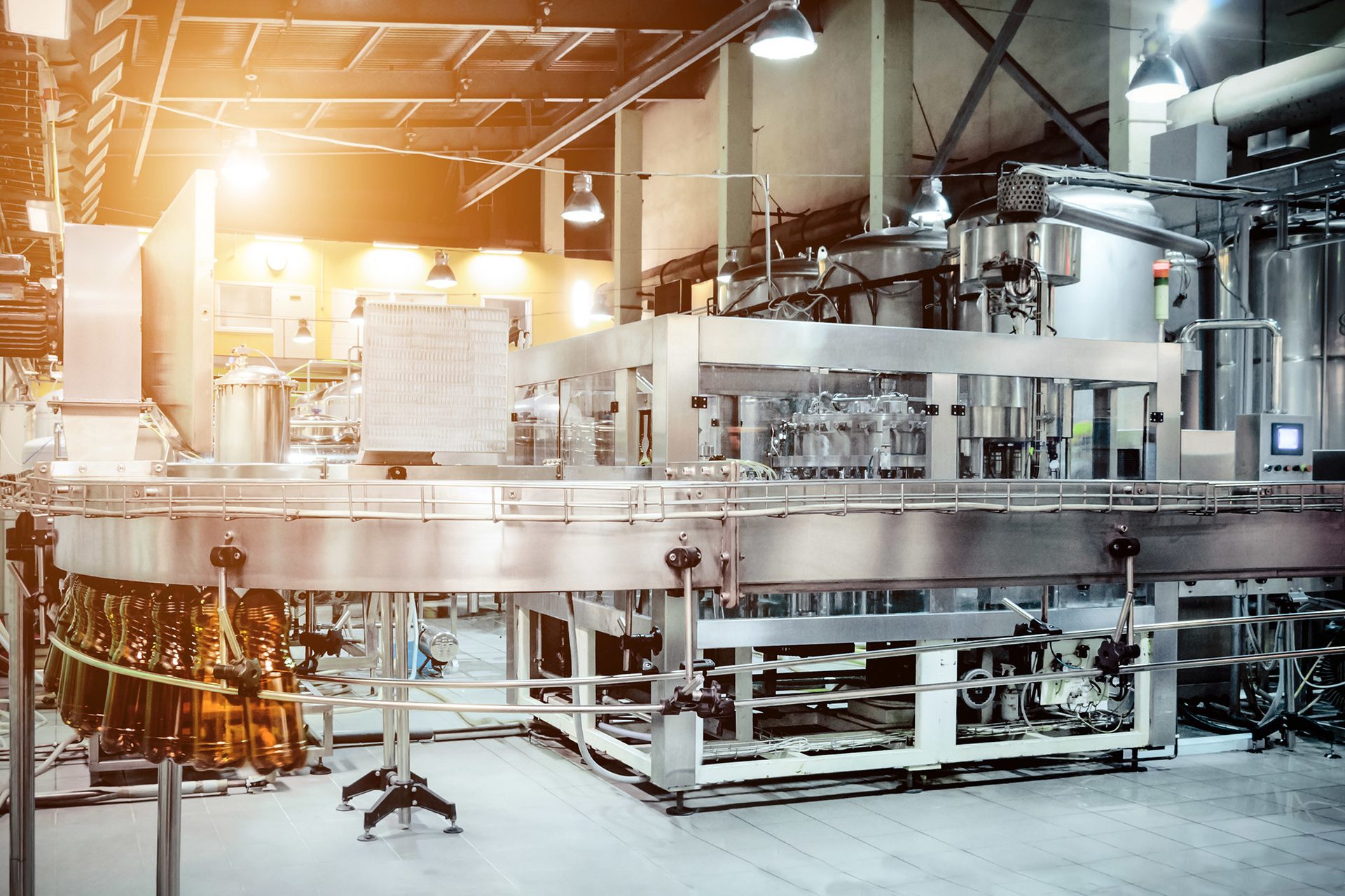
Cleaning and disinfection is important in the production environment in beverage processing
An Overview of Disinfection Control
Disinfection is the process of cleaning using compounds that either eliminate bacteria and other disease-causing organisms or reduce them to levels not harmful to health. Disinfection control is a key process in food manufacturing and comprises several steps: ensuring the correct concentrations of disinfecting reagents are used, checking that disinfection has been completed sufficiently, and testing that it has been accomplished without leaving any contaminating residues. Disinfection control makes use of the chemical reactions caused by disinfectants to determine their absence or presence, or more precisely their concentration.
It is important to note that, in contrast, hygiene monitoring is a related and sometimes overlapping process that it is generally preventative. Hygiene monitoring also involves ensuring that cleaning procedures have been implemented adequately and that no contaminating residues remain, but additionally can involve allergen monitoring and prevention of microbial growth.
Both of these processes are critical in the food and beverage industry where preventing foodborne illnesses is a key objective in maintaining safe manufacturing. Here, we focus on disinfection control and how to navigate the numerous options in its methods and instrumentation.
Considerations in Choosing Disinfectants
One of the primary concerns in selecting a disinfectant is to maintain the quality of the final manufactured product. As such, a disinfectant in the food and beverage industry must not be toxic or leave toxic residues. It should also be fast acting to minimize disruption to the manufacturing process. Additionally, it should not leave any odor or taste residue that could affect the end product. In order to facilitate the removal of any residues, it is for instance helpful if a disinfectant has good solubility so that it may be rinsed away after disinfection is complete.
The compatibility of the disinfectant with the equipment and methods used in manufacturing is also important. For example, it should work well on the type/material of the surface being disinfected without damaging the equipment. It should also be compatible in terms of other physical factors such as temperature and pH, remaining effective under the conditions in which it is used.
Finally, the method of disinfection control required of a given disinfectant can also affect which disinfectant is chosen.
Did you know...
… that the FREE MQuant® StripScan smart phone app for reliable and consistent test strip readout and documentation was expanded to 10+ parameters, including Peracetic Acid and Peroxide?
Disinfection Control with Photometry
A number of photometric methods can be used to assess commonly used disinfectants such as peroxide, peracetic acid, chlorine, quaternary ammonium compounds, ozone, and more. There are two options for instrumentation in these types of measurements: high-tech benchtop instruments like the Spectroquant® Prove spectrophotometer, or convenient mobile instruments like the Spectroquant® Move family of colorimeters.
Benchtop Spectrophotometers
For disinfection control conducted in a laboratory setting, benchtop spectrophotometers like the Spectroquant® Prove can be used. One key advantage of these instruments is that they have a broad measuring range. The Spectroquant® Prove 600, for example, can detect ultra-low concentrations if that is required by a disinfection control method. They also use Live ID codes which automatically detect the test method, lot number, expiry date, and calibration updates to streamline analysis and documentation.
On-the-Spot Analysis with Colorimeters
Often the convenience of portable instruments is important, especially when it would be most appropriate to conduct disinfection control in the field. Spectroquant® Move colorimeters are portable instruments that allow analysis directly at the sampling site.
These instruments are robust: they are waterproof according to IP68 standard and are therefore suitable for use in wet or dusty environments. They also give fast results and are easy to use. The Spectroquant® Move 100 is designed for use with over 100 pre-programmed parameters for versatility. The Spectroquant® Move DC, on the other hand, is designed specifically for disinfection control, and can measure five essential parameters: chlorine, ozone, chlorine dioxide, cyanuric acid, and pH.
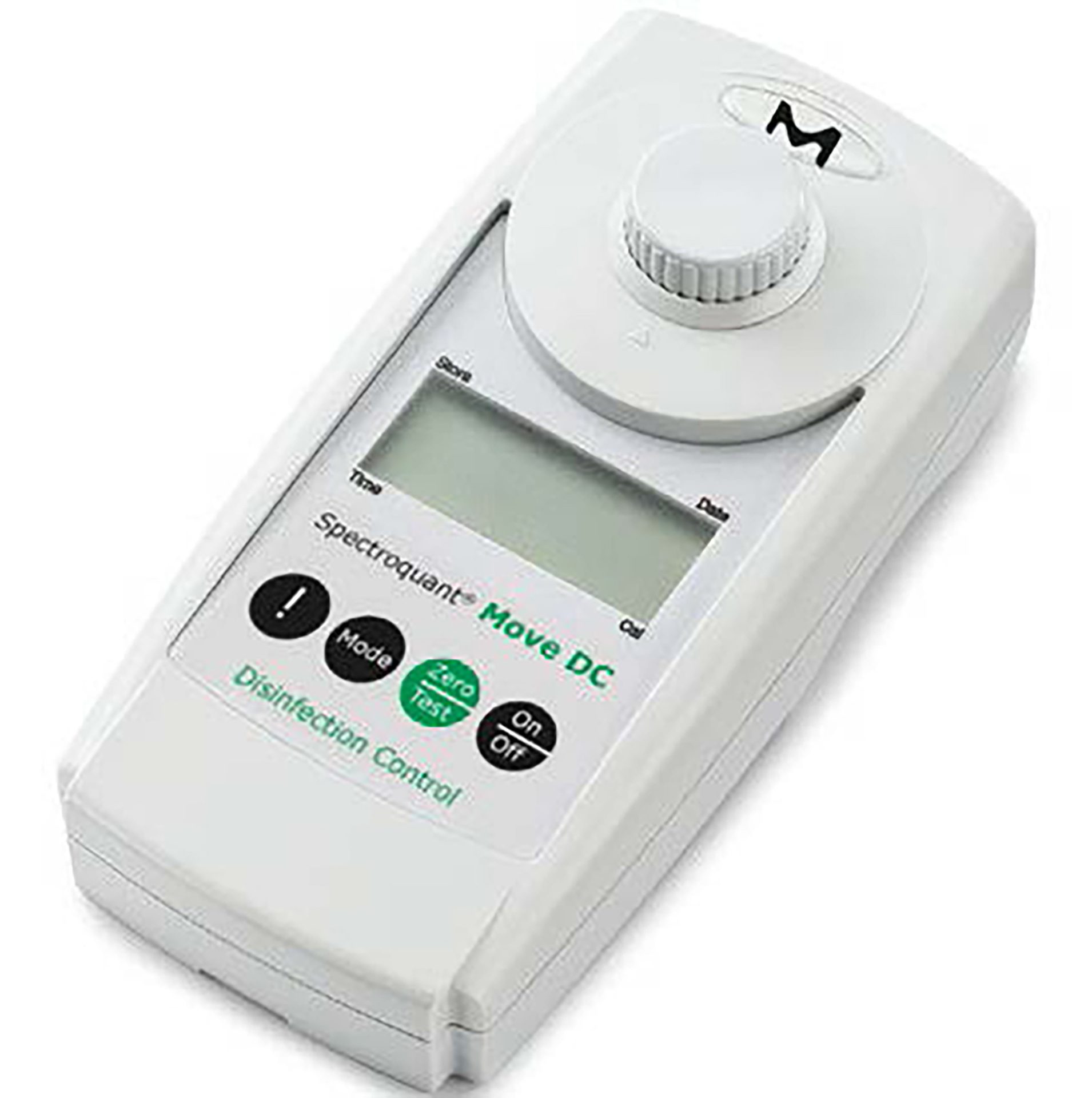
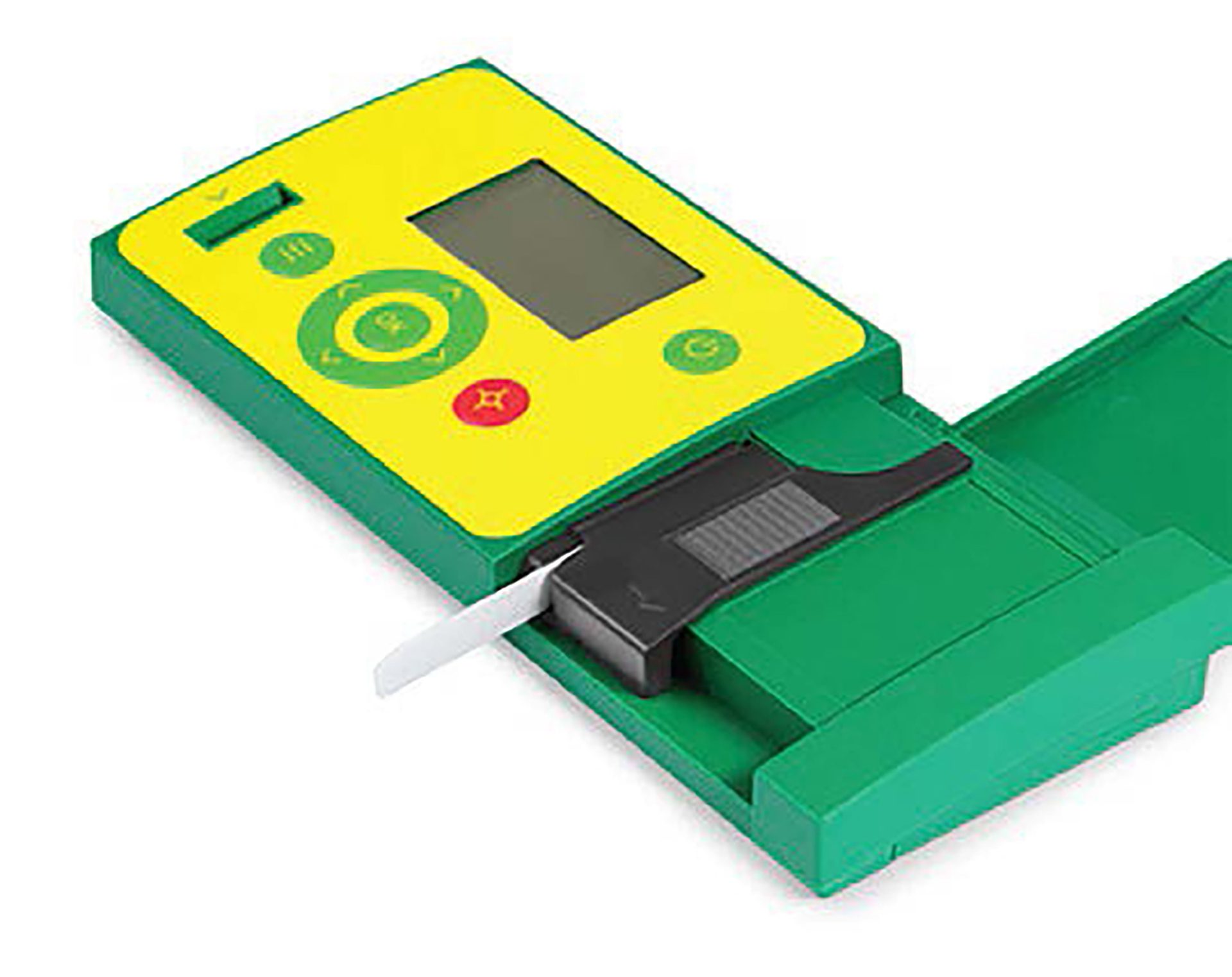
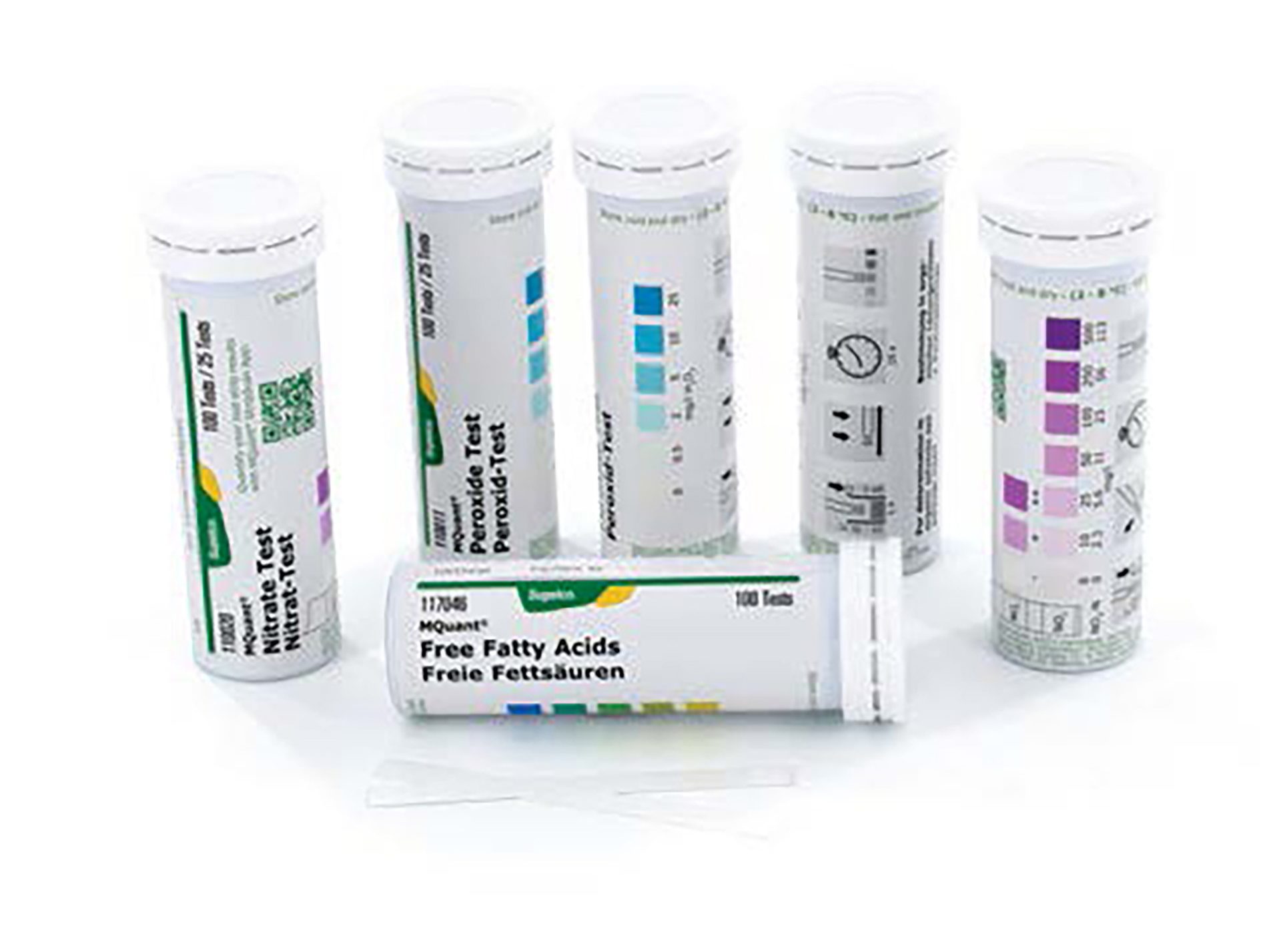
LEFT TO RIGHT: Spectroquant® Move Colorimeter for disinfection control, RQflex® 20 reflectometer for disinfection control, MQuant® test strips for disinfection control
TOP TO BOTTOM: Spectroquant® Move Colorimeter for disinfection control, RQflex® 20 reflectometer for disinfection control, MQuant® test strips for disinfection control
Test Strip Methods for Disinfection Control
An alternative to wet chemistry is using test strips. Both of the methods discussed here can be conducted on-site, and share this advantage with Spectroquant® Move Colorimeters. Additionally, test strip analysis circumvents the need for handling liquid chemicals or using glass vials in the field to enhance safety, which can be an important factor in choosing a disinfection control procedure.
Reflectometry with Test Strips
Disinfection control using Reflectoquant® test strips and the RQflex® 20 reflectometer for read-out can be an attractive option because it can be done in the field, is easy to conduct, produces little waste, and yields quantitative results. An additional benefit is that tests are barcoded with batch-specific calibration information for accuracy and precision, and results are traceable. Test strips are available for 23 different parameters, and the portfolio includes compounds commonly investigated in the food and beverage industry.
Test Strips as a Standalone Method
Visual tests using a color chart for comparison with test strips are also an option for semi-quantitative disinfection control. The MQuant® line of test strips can be used for this type of analysis and has the benefit of being the most economical of the methods discussed here. Test strips offer an additional advantage of not requiring any instrumentation, and consequently no electricity, to carry out analyses. MQuant® test strips are robust, easy to use, and safe.
A smartphone app, MQuant® StripScan, is available to perform color comparison if desired in order to improve precision, as well as provide documentation of results and traceability.
“Disinfection control makes use of the chemical reactions caused by disinfectants to determine their absence or presence, or more precisely their concentration.”
A Closer Look at Common Disinfectants
Peracetic Acid
Peracetic acid is often used to disinfect drinking water bottles and surfaces in production. Its determination by titration is complex, with many steps requiring use of glassware. It is also time-consuming, taking about 15 minutes for each measurement.
MQuant® test strips, in contrast, can give a semiquantitative result within a minute, thereby cutting down the analysis time significantly. For a quantitative and documented result, Reflectoquant® test strips can be used to get a result in just a few simple steps and comparably a short period of time.
Hydrogen Peroxide
Another disinfectant frequently used in food and beverage manufacturing is peroxide. Tests for its levels are available in the Spectroquant® line, as well as in test strips, both for use with the RQflex® 20 reflectometer and for the standalone MQuant® method. Several different concentration ranges are available for all of the methods.
Ozone
Ozone is a powerful antioxidant and is also used as a disinfectant. Spectroquant® test kits can be used for a quantitative determination of ozone. Alternatively, MQuant® rapid liquid test kits with color cards or color disk comparators can also be used to determine ozone concentrations.
Chlorine
Chlorine is used in the food and beverage industry for its ability to quickly eliminate bacteria and other microbes in water. It is used in potable water disinfection and washing vegetables, among other things. Spectroquant® kits can be used for quantitative chlorine testing, whereas MQuant® test strips and rapid liquid tests give semi-quantitative and fast results.
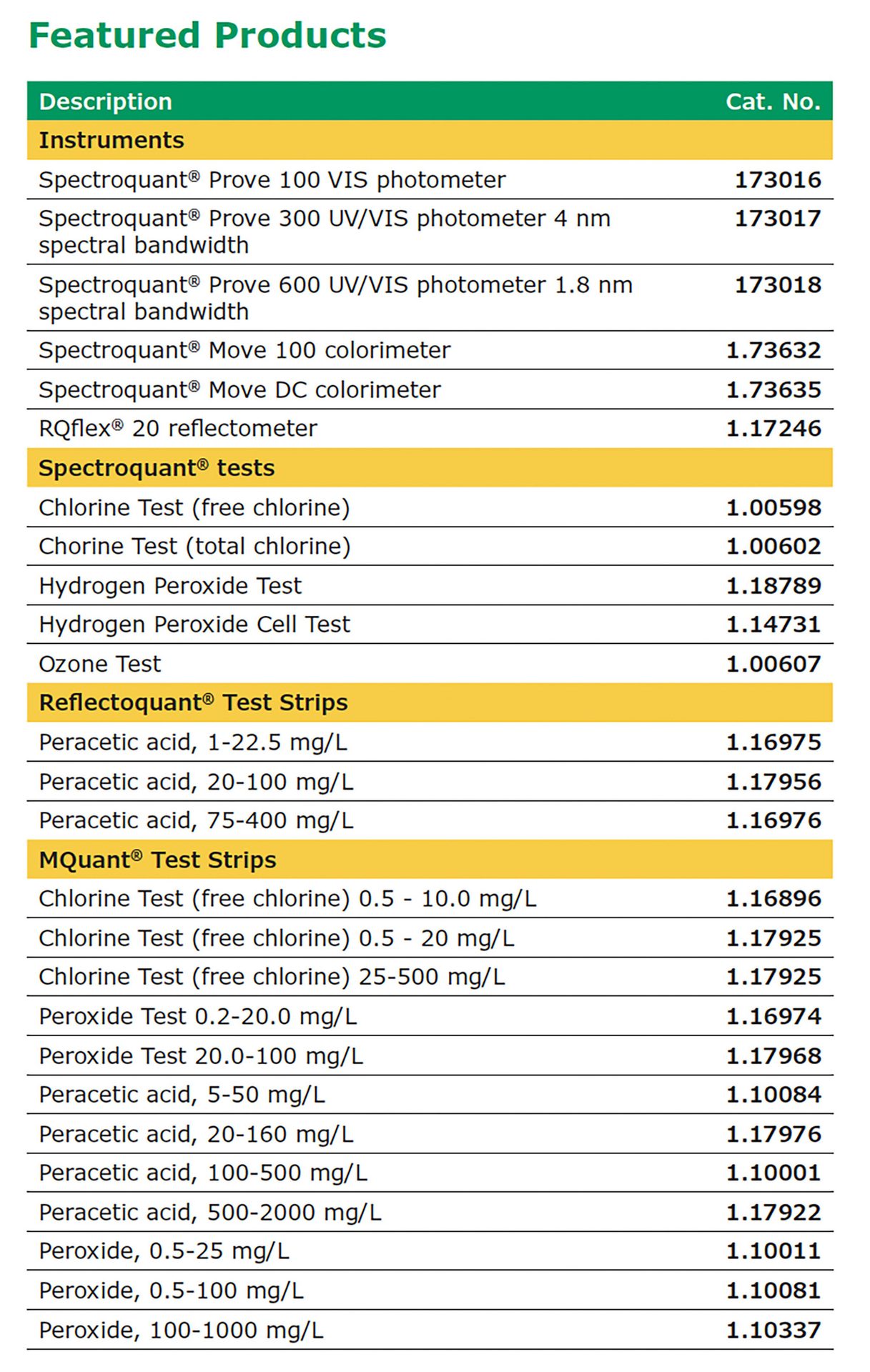
View more resources on disinfection control at SigmaAldrich.com/disinfectioncontrol
Saskia Neubacher is Product Manager, Point of Use. Contact at Analytix@milliporesigma.com.
IMAGE CREDIT: Nordroden/iStock / Getty Images Plus via Getty Images & Millipore Sigma
